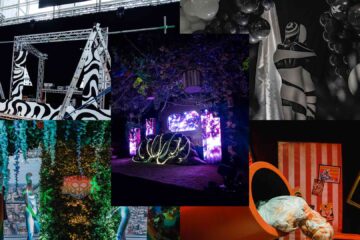The world of architecture is currently experiencing a significant transformation. The pivotal focus – sustainability – is now moving from being a rapidly fading fad to a critical cornerstone in any architectural journey. It’s hard to imagine any project taking place these days without some sustainable architecture component, whether residential or commercial.
Non-Negotiable Sustainability
In the speedily changing landscape of today’s world, sustainability has morphed from being just a highly-used term into an absolute necessity. The rapid urbanisation is leading to the urgent requirement for green buildings that curtail environmental damage. However, it is pertinent to remember that green architecture isn’t confined to cutting down carbon emissions. It embraces the approach of blending harmoniously with nature while crafting aesthetically pleasing and utility-driven surroundings.
Pioneering Materials and Groundbreaking Technologies
One of the intriguing facets of sustainable architecture is the amalgamation of cutting-edge materials and avant-garde technologies. Architects are persistently exploring eco-friendly materials that elevate the façade of buildings. For instance, bamboo, lauded for its robustness, adaptability, and quick growth rate, provides a sustainable alternative to conventional construction materials.
Solar panels, rainwater conservation systems, and energy-saving insulation have altered the game, transitioning from being scarcely used features to fundamental components of green design. What’s more, these innovative solutions not only curb power consumption but also amount to sizable financial savings in the long run. The incorporation of intelligent building systems further refines resource usage, making edifices more adaptive and efficient.
Tangible Effects on Communities and the Ecosystem
The influence of sustainable design transcends individual structures; it profoundly affects communities and the broader environment. Urban planning that thoughtfully integrates green spaces, efficient public transit, and pedestrian-focused areas result in thriving, healthier communities.
Consider the Bullitt Center in Seattle, often dubbed as the most sustainable commercial building globally. Its self-sustaining energy production, water treatment and reuse, and toxin-free construction material usage not only lessen its environmental impact but also serve as a learning platform, exemplifying sustainable architecture’s potential.
Bosco Verticale (Vertical Forest) in Milan is another exemplary case. The residential towers house over 900 trees and 20,000 plants, aiding in air purification, noise abatement, and a microclimate that maintains temperature balance within the structures. This showcases that integrating vegetation in urban settings can markedly enhance habitability while tackling environmental hurdles.
Making Positive Decisions
The shift towards sustainability is both an opportunity and a commitment for architects and homeowners. With the mindful selection of green materials, leverage of pioneering technologies, and mindful design with the broader community and environment well-being, we can create structures that are aesthetically pleasing, functional, and advantageous to our planet.
The escalating trend of sustainability in architecture is more than just a movement; it underpins our era. It compels us to reconsider our design and construction methodologies, inspiring us to leave a positive imprint for future generations.
Keep an eye for more news & updates on ForbesZine!




